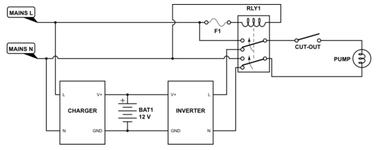GastonRafaelMelo
Newbie level 6
Hi to all (again),
I desing a sine wave inverter and its working as suppose to do. Now I want to know how can I do to switch betwwen AC mains and the inverter output. As far as I can see is using AC relays and according to the current use. Is there other method? could you point me to some references?
Regards
GAstón
I desing a sine wave inverter and its working as suppose to do. Now I want to know how can I do to switch betwwen AC mains and the inverter output. As far as I can see is using AC relays and according to the current use. Is there other method? could you point me to some references?
Regards
GAstón
